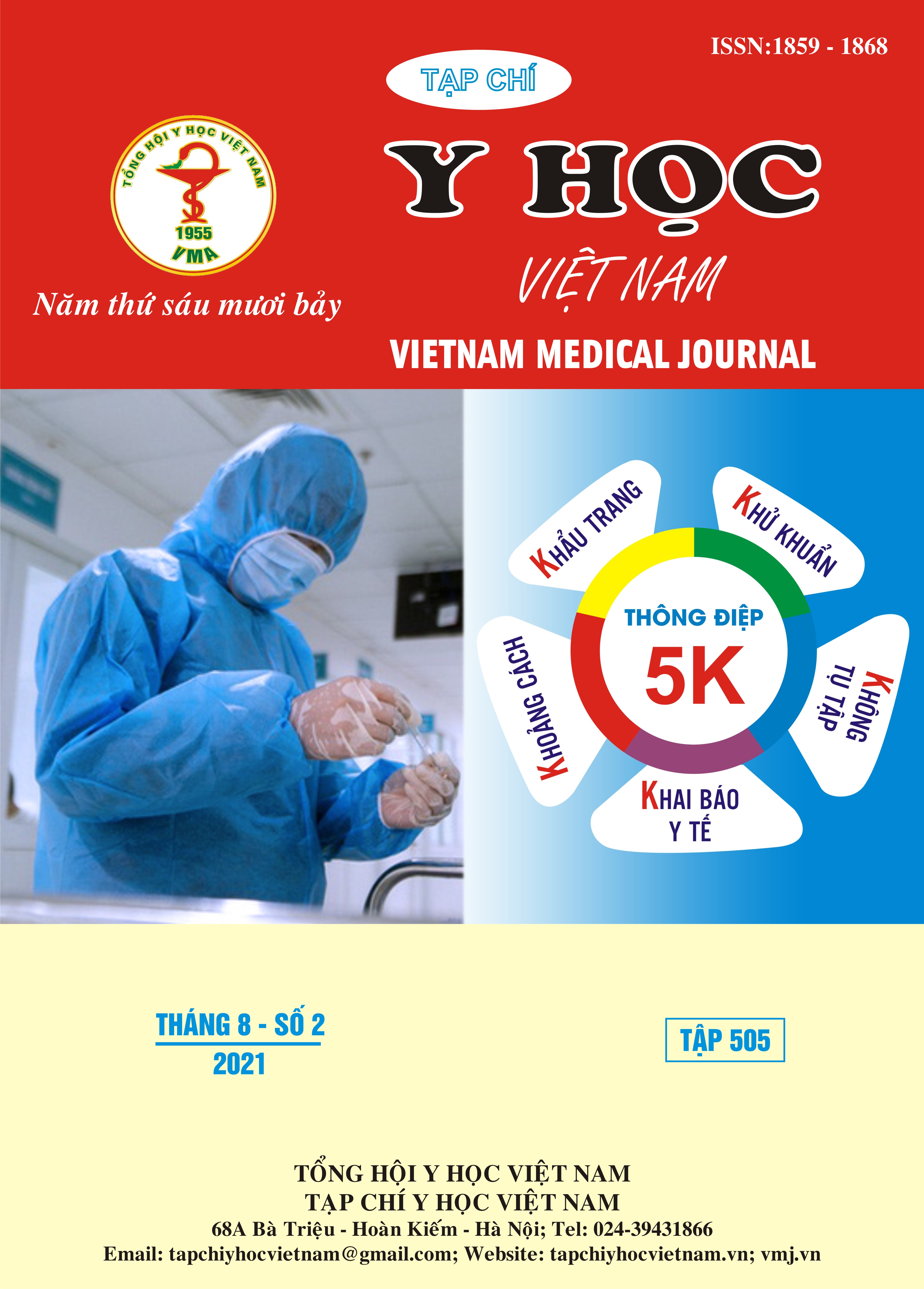EVALUATION OF VOICE: BEFORE AND AFTER ENDOSCOPIC SINUS SURGERY IN PATIENTS WITH CHRONIC RHINOSINUSITIS WITH NASAL POLYP GRADE III, IV
Main Article Content
Abstract
Chronic Rhinosinusitis with nasal polyps accounted for 0.5-4% world population and 20% chronic rhinosinusitis patients. Chronic Rhinosinusitis with nasal polyps grade III, IV is one of the causes affecting the volume of the nasal cavity, nasal meatus, paranasal sinuses affect nasal ventilation, nasal sounds and resonances. To evaluate the impact on sound quality and articulation in these subjects, we conducted a study on 30 patients diagnosed with chronic rhinosinusitis with nasal polyps, grade III and IV, who underwent Endoscopic Sinus Surgery, open the sinuses and nasal polypectomy at the National Hospital of Otolaryngology, and analyzed their voice before and after surgery using the PRAAT sound analysis program. Results: Age: 18-44 years old: 40.0%, 45-65 years old: 56.7%, over 65 years old: 3.3%. Male: 70%, female: 30%. Reason for examination: Nasal congestion 73.3%, snoring 20.0%, reduction or loss of smell 6.7%. Symptoms: Nasal congestion 93.8%, nose discharge 63.3%, snoring 40.0%, reduction or loss of smell 43.3%, headache 53.3%, cough 26.7%, reduction of vision 3.3%. Physical symptoms: Nasal mucosa appear pale 100%, inferior turbinate hypertrophy 40.0%, middle turbinate degeneration 66.7%. Nasal polyps grading: Grade III 53.3%, grade IV 46.7%. Paranasal sinus CT Scan with Coronal, Axial and Sargital scans: Ostiomeatus complexus obstruction 100%, turbinate degeneration 73.3%, olfactory cleft obstruction 60.0%, concha bullosa 6.7%. Voice assessment: Nasal consonants (m. n, ng, nh) before surgery: Shimmer 9.671%, Jitter 3.984%, HNR 28.123dB, F0 237Hz, F1 1231Hz, F2 1007Hz. After surgery: Shimmer 5.251%, Jitter 1.984%, HNR 22.003dB, F0 124Hz, F1 892Hz, F2 126Hz.
Article Details
Keywords
chronic rhinosinusitis with nasal polyps grade III-IV, PRATT program, Shimmer index, Jitter, HNR, formants
References
2. Arslan F, Polat B, Durmaz A, Birkent H. Effects of Nasal Obstruction due to Nasal Polyposis on Nasal Resonance and Voice Perception. Folia Phoniatr Logop. 2016;68(3):141-143.
3. Dalston RM. Acoustic assessment of the nasal airway. Cleft Palate-Craniofacial J Off Publ Am Cleft Palate-Craniofacial Assoc. 1992;29(6):520-526.
4. Salturk Z, Uyar Y, Atar Y, et al. Subjective Evaluation of Vocal Quality in Nasal Polyposis. Haseki Tıp Bül. 2014;52:278-281.
5. Behrman A, Shikowitz MJ, Dailey S. The Effect of Upper Airway Surgery on Voice. Otolaryngol Neck Surg. 2002;127(1):36-42.
6. Soler ZM, Wittenberg E, Schlosser RJ, Mace JC, Smith TL. Health state utility values in patients undergoing endoscopic sinus surgery. The Laryngoscope. 2011;121(12):2672-2678.
7. Lưu AT. Nghiên cứu đặc điểm lâm sàng, nội soi, cắt lớp vi tính và mô bệnh học của viêm mũi xoang mạn tính có polyp. Published online 2018.
8. Acar A, Cayonu M, Ozman M, Eryilmaz A. Changes in Acoustic Parameters of Voice After Endoscopic Sinus Surgery in Patients with Nasal Polyposis. Indian J Otolaryngol Head Neck Surg Off Publ Assoc Otolaryngol India. 2014;66(4):381-385.
9. Kim YH, Lee SH, Park CW, Cho JH. Nasalance change after sinonasal surgery: analysis of voice after septoturbinoplasty and endoscopic sinus surgery. Am J Rhinol Allergy. 2013;27(1):67-70.


